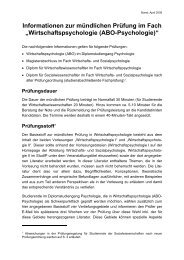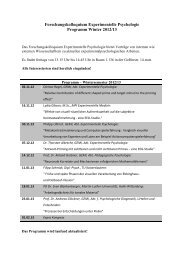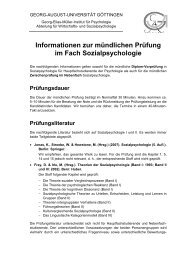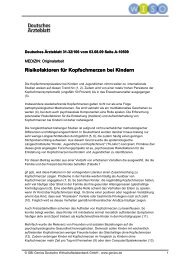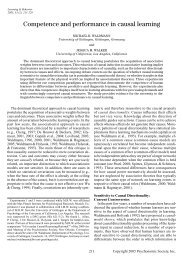Pretence as Individual and Collective Intentionality
Pretence as Individual and Collective Intentionality
Pretence as Individual and Collective Intentionality
You also want an ePaper? Increase the reach of your titles
YUMPU automatically turns print PDFs into web optimized ePapers that Google loves.
<strong>Pretence</strong> <strong>as</strong> <strong>Individual</strong> <strong>and</strong> <strong>Collective</strong> <strong>Intentionality</strong> 50 3<br />
We tested the behaving-<strong>as</strong>-if account with an action-b<strong>as</strong>ed methodology<br />
inspired by infant imitation work. The logic of the studies ( Rakoczy, Tom<strong>as</strong>ello<br />
<strong>and</strong> Striano, 2004, 2006; Rakoczy <strong>and</strong> Tom<strong>as</strong>ello, 2006 ) w<strong>as</strong> straightforward:<br />
children ’ s imitative <strong>and</strong> inferential responses to two kinds of <strong>as</strong>-if-behaviours —<br />
pretending to perform an action <strong>and</strong> trying to perform the very same action- were<br />
compared. Both c<strong>as</strong>es constitute <strong>as</strong>-if-behaviours according to the defi nition of<br />
Nichols <strong>and</strong> Stich; <strong>and</strong> accordingly, if the child is a behaving-<strong>as</strong>-if theorist, she<br />
should not systematically distinguish the two c<strong>as</strong>es. In contr<strong>as</strong>t, if the child<br />
underst<strong>and</strong>s the b<strong>as</strong>ic intentional structure of the two kinds of acts, she should<br />
respond differentially <strong>and</strong> appropriately to the two kinds of models: after trying<br />
models, she should go on to perform the action properly (or at le<strong>as</strong>t also try to);<br />
after pretence models, in contr<strong>as</strong>t, she should only perform the pretend act herself,<br />
<strong>and</strong> appropriately related pretence acts.<br />
The children were shown pairs of such superfi cially analogous incomplete <strong>as</strong>-ifbehaviours<br />
with objects, for example pretending to pour from a container into a<br />
cup, <strong>and</strong> unsuccessfully trying to do the same act. In both c<strong>as</strong>es the actor would<br />
make pouring movements with a novel container over a cup, but without actual<br />
pouring happening. In the one c<strong>as</strong>e, he would mark it with signs of playfulness <strong>and</strong><br />
sound effects <strong>as</strong> pretending to pour, in the other c<strong>as</strong>e he would mark it with signs<br />
of surprise <strong>and</strong> frustration <strong>as</strong> trying to really pour. Importantly, the container did<br />
really contain water <strong>and</strong> thus could be really used to pour. In the fi rst studies<br />
( Rakoczy et al. , 2004 , Studies 1 <strong>and</strong> 2) the situation w<strong>as</strong> set up <strong>as</strong> an imitation<br />
game. After the actor ’ s model action children were then given the object <strong>and</strong><br />
could act with it themselves. Three-year-olds (<strong>and</strong> to some lesser degree 2-yearolds)<br />
very clearly showed that they understood pretending <strong>and</strong> trying <strong>as</strong> such: after<br />
trying models, they really performed the action themselves or tried to really<br />
perform it, often commenting on their failure (e.g. ‘ I cannot do it either ’ ), but<br />
after pretence models they only pretended themselves <strong>and</strong> did not care about the<br />
real effects of their acts (e.g. whether there w<strong>as</strong> water coming out of the<br />
container).<br />
In another design ( Rakoczy et al. , 2004 , Study 3; Rakoczy <strong>and</strong> Tom<strong>as</strong>ello,<br />
2006 ), children were presented with some of the same model pairs, but now not<br />
in a strict imitation game only. Rather, inspired by previous studies by Harris <strong>and</strong><br />
Kavanaugh (1993) <strong>and</strong> Leslie (1994) , the pragmatics of the situation w<strong>as</strong> set up to<br />
encourage more productive inferential responses <strong>as</strong> well (among other things by<br />
supplying them with additional props some of which could be used for instrumental<br />
purposes (tools), <strong>and</strong> some of which for fi ctional purposes (dolls etc.)). When 2-<br />
<strong>and</strong> 3-year-olds now saw an actor try to pour they themselves then really did the<br />
action or tried to, but with different means. For example, they made use of a tool<br />
to open the container fi rst. When the actor had pretended to pour, in contr<strong>as</strong>t,<br />
children themselves pretended to pour <strong>and</strong> then went on to pretend to drink <strong>and</strong><br />
give some dolls a drink (older 1-year-olds showed a pattern of responses in the<br />
same direction, but not <strong>as</strong> clear <strong>as</strong> the 2- <strong>and</strong> 3-year-olds). That is, children revealed<br />
a rich underst<strong>and</strong>ing of the intentional structures of pretending <strong>and</strong> trying <strong>as</strong><br />
© 2008 The Author<br />
Journal compilation © 2008 Blackwell Publishing Ltd





